- Home
- Oliver Sacks
Seeing Voices Page 13
Seeing Voices Read online
Page 13
All sorts of changes, administrative, educational, social, psychological, are already beginning at Gallaudet. But what is clearest at this point is the much-altered bearing of its students, a bearing that conveys a new, wholly unself-conscious sense of pleasure and vindication, of confidence and dignity. This new sense of themselves represents a decisive break from the past, which could not have been imagined just a few months ago.
But has all been changed? Will there be a lasting “transformation of consciousness”? Will deaf people at Gallaudet, and the deaf community at large, indeed find the opportunities they seek? Will we, the hearing, allow them these opportunities? Allow them to be themselves, a unique culture in our midst, yet admit them as co-equals, to every sphere of activity? One hopes the events at Gallaudet will be but the beginning.
Notes
Preface
1. Although the term “Sign” is usually used to denote American Sign Language (ASL), I use it in this book to refer to all indigenous signed languages, past and present (e.g., American Sign Language, French Sign, Chinese Sign, Yiddish Sign, and Old Kentish Sign). But it excludes signed forms of spoken languages (e.g., Signed English), which are mere transliterations and lack the structure of genuine sign languages.
2. Some in the deaf community mark this distinction by a convention whereby audiological deafness is spelled with a small “d,” to distinguish it from Deafness with a big “d,” as a linguistic and cultural entity.
3. The many (and sometimes lengthy) endnotes should be regarded as mental or imaginative excursions, to be taken, or avoided, as the reader-traveler chooses.
Part I: A Deaf World
1. This colleague, Lucy K., is so expert a speaker and lip-reader that I did not realize at first that she was deaf. It was only when I chanced one day to turn my head to one side as we were talking, inadvertently cutting off communication instantly, that I realized she was not hearing me but lip-reading me (“lip-reading” is an extremely inadequate word for the complex art of observation, inference, and inspired guesswork which goes on). When the diagnosis of deafness was made, at about twelve months, Lucy’s parents had immediately expressed their passionate desire that their daughter should speak and be a part of the hearing world, and her mother devoted hours every day to an intensive one-to-one tuition of speech—a grueling business that lasted twelve years. It was only after this (at the age of fourteen) that Lucy learned Sign; it has always been a second language, and one that does not come “naturally” to her. She continued (with her excellent lip-reading and powerful hearing aids) in “normal” (hearing) classes in high school and college, and now works, with hearing patients, at our hospital. She herself has mixed feelings about her status: “I sometimes feel,” she once said, “that I am between two worlds, that I don’t quite fit into either.”
2. Prior to reading Lane’s book, I had seen the few deaf patients under my care in purely medical terms—as “diseased ears” or “otologically impaired.” After reading it, I started to see them in a different light, especially when I would catch sight of three or four of them signing, full of an intensity, an animation, I had failed to see before. Only then did I start thinking of them not as deaf but as Deaf, as members of a different linguistic community.
3. There have been at least a half dozen major programs in England since “Voices from Silent Hands” (Horizon, 1980). There have been many programs in the United States (in particular, some excellent ones from Gallaudet University, such as “Hands Full of Words”)—the most recent and important of these is Frederick Wiseman’s huge, four-part documentary “Deaf and Blind,” shown on public television in 1988. There have also been an increasing number of fictional representations of deafness on television. Thus a January 1989 episode of the new “Star Trek,” entitled “Louder than a Whisper,” featured the deaf actor Howie Seago as a deaf, signing ambassador from another planet.
4. This was indeed the case when Wright’s book was published in 1969. Since then there has been an explosion of writings about deafness by the deaf, of which the most remarkable is Deaf in America: Voices from a Culture, by the deaf linguists Carol Padden and Tom Humphries. There have also been novels about the deaf by the deaf, for example, Islay by Douglas Bullard, which attempt to catch the distinctive perceptions, the stream of consciousness, the inner speech of those who sign. For other books by deaf writers, see the fascinating bibliography provided by Wright in Deafness.
5. Wright uses Wordsworth’s phrase, “eye-music,” for such experiences, even when there is no accompanying auditory phantasm, and this is used by several deaf writers as a metaphor for their sense of visual patterns and beauty. It is especially used of the recurrent motifs (the “rhymes,” the “consonances,” etc.) of Sign poetry.
6. There is, of course, a “consensus” of the senses—objects are heard, seen, felt, smelt, all at once, simultaneously; their sound, sight, smell, feel all go together. This correspondence is established by experience and association. This is not, normally, something we are conscious of, although we would be very startled if something didn’t sound like it looked—if one of our senses gave a discrepant impression. But we may be made conscious, very suddenly and startlingly, of the senses’ correspondence, if we are suddenly deprived of a sense, or gain one. Thus David Wright “heard” speech, the moment he was deafened; an anosmic patient of mine “smelt” flowers, whenever he saw them (Sacks, l985); and a patient described by Richard Gregory (in “Recovery from early blindness: a case study,” reprinted in Gregory, 1974) could at once read the time on a clock when he was given his sight (he had been blind from birth) by an eye operation: before that he had been used to feeling the hands of a watch with its watch-glass removed, but could make an instant “transmodal” transfer of this knowledge from the tactile to the visual, as soon as he was able to see.
7. This hearing (that is, imagining) of “phantasmal voices,” when lips are read, is quite characteristic of the postlingually deaf, for whom speech (and “inner speech”) has once been an auditory experience. This is not “imagining” in the ordinary sense, but rather an instant and automatic “translation” of the visual experience into an auditory correlate (based on experience and association)—a translation that probably has a neurological basis (of experientially established visual-auditory connections). This does not occur, of course, in the prelingually deaf, who have no auditory experience or imagery to call upon. For them lipreading—as, indeed, ordinary reading—is an entirely visual experience; they see, but do not hear, the voice. It is difficult for us, as speaker-hearers, even to conceive such a visual “voice,” as it is for those who have never heard to conceive an auditory voice.
The congenitally deaf, it should be added, may have the richest appreciation of (say) written English, of Shakespeare, even though it does not “speak” to them in an auditory way. It speaks to them, one must suppose, in an entirely visual way—they do not hear, they see, the “voice” of the words.
When we read, or imagine someone speaking, we “hear” a voice, upon the inward ear. What of those born deaf? How do they imagine voices? Clayton Valli, a deaf Sign poet, when a poem is coming to him, feels his body making little signs—he is, as it were, speaking to himself, in his own voice. But what if other voices are imagined, or dreamed, or hallucinated? The mad often suffer from “hearing voices”—other voices, often accusing voices, nagging and cajoling them; do deaf people, if they go mad, suffer from “seeing voices” too? And, if so, how are these seen? As hands in mid-air making signs; or as whole-body visual apparitions making signs? I have found it oddly difficult to get a clear answer—as it may be difficult, sometimes, to get a dreamer to tell you how he dreams. He is given to understand something, in the course of his dream, but whether by sight or sound, how, he is unable to say. There are as yet too few studies on hallucinations, dreaming, and language imagery in the deaf.
The question of how much the postlingually deaf may continue to “hear” has analogies to the ways in which those blinded la
te in life may continue to “see,” and continue, one way and another, in waking and dreams, to live in a visual world. The most extraordinary autobiographical account of this has been provided by John Hull (1990). “During the first couple of years of blindness,” he writes, “when I thought about people I knew, they fell into two groups. There are those with faces, and those without faces.… The people I knew before I lost my sight have faces but the people I have met since do not have faces … as time went by, the proportion of people with no faces increased.” With those whom he knew, there would be vivid images of their faces as they spoke to him—though images fixed by his last impressions before he became blind, and therefore increasingly outdated. With others, of whom there were no actual visual memories, there were, at one point, incontinent visual “projections” (perhaps analogous to Wright’s auditory “phantasms” and the phantom limbs of amputees: such “sensory ghosts” are created by the brain when it is suddenly cut off from normal sensory input).
In general, Hull found, as the years went by, he moved deeper and deeper into what he calls “deep blindness,” with less and less memory of, imagination of, or need for, visual images, and more and more the sense of being a “whole body seer,” living in an autonomous and complete world of body sensations, touch, smell, and taste, and, of course, hearing—all these senses now greatly enhanced. He continues to use visual images and metaphors in his speech, but these, increasingly, are only metaphors for him. It is probable that those who have been deafened late in life, similarly, may gradually lose more and more of their auditory memories and images, as they advance into the exclusively visual world of “deep” deafness. When Wright was asked if he would like his hearing back, at this stage, he answered, no, he now found his world complete.
8. This is the stereotypical view, and it is not altogether true. The congenitally deaf do not experience or complain of “silence” (any more than the blind experience or complain of “darkness”). These are our projections, or metaphors, for their state. Moreover, those with the profoundest deafness may hear noise of various sorts and may be highly sensitive to vibrations of all kinds. This sensitivity to vibration can become a sort of accessory sense: thus Lucy K., although profoundly deaf, can immediately judge a chord as a “fifth” by placing a hand on the piano and can interpret voices on highly amplified telephones; in both cases what she seems to perceive are vibrations, not sounds. The development of vibration-perception as an accessory sense has some analogies to the development of “facial vision” (which uses the face to receive a sort of sonar information) in the blind.
Hearing people tend to perceive vibrations or sound: thus a very low C (below the bottom of the piano scale) might be heard as a low C or a toneless fluttering of sixteen vibrations per second. An octave below this, we would hear only fluttering; an octave above this (thirty-two vibrations a second), we would hear a low note with no fluttering. The perception of “tone” within the hearing range is a sort of synthetic judgment or construct of the normal auditory system (see Helmholtz’s The Sensations of Tone, first published in 1862). If this cannot be achieved, as in the profoundly deaf, there may be an apparent extension of vibratory-sense upward, into realms which, for hearing people, are perceived as tones—even into the middle range of music and speech.
9. Isabelle Rapin thinks of deafness as a treatable, or, better, preventable form of mental retardation (see Rapin, 1979).
There are fascinating differences in style, in approach to the world, between the deaf and the blind (and the normal). Blind children, in particular, tend to become “hyperverbal,” to employ elaborate verbal descriptions instead of visual images, trying to deny, or replace, visuality by verbality. This tended, the analyst Dorothy Burlingham thought, to produce a sort of pseudo-visual “false self,” a pretense that the child was seeing when it was not (Burlingham, 1972). She felt it crucial to see blind children as having an entirely different profile and “style”—one that required a different sort of education and language—to see them not as deficient, but as different and distinctive in their own right. This was a revolutionary attitude in the 1930s, when her first studies were published. One wishes there were comparable psychoanalytic studies of children born deaf—but this would need a psychoanalyst who, if herself not deaf, was at least a fluent, and preferably native, user of Sign.
10. Victor, the Wild Boy, was first seen in the woods of Aveyron in 1799, going on all fours, eating acorns, leading an animal’s life. When he was brought to Paris in 1800, he aroused enormous philosophical and pedagogical interest: How did he think? Could he be educated? The physician Jean-Marc Itard, also notable for his understanding (and his misunderstandings) of the deaf, took the boy into his house and tried to teach him language and educate him. Itard’s first memoir was published in 1807 and was followed by many others. Harlan Lane has also devoted a book to him, which meditates, among other things, on the contrast between such “wild” boys and those born deaf.
Eighteenth-century romantic thought, of which Rousseau was so notable an example, was disposed to see all inequality, all misery, all guilt, all constraint as due to civilization, and to feel that innocence and freedom could only be found in Nature: “Man is born free, but is everywhere in chains.” The horrifying reality of Victor was something of a corrective to this, a revelation that, as Clifford Geertz puts it:
there is no such thing as a human nature independent of culture. Men without culture would not be … the nature’s noblemen of Enlightenment primitivism.… They would be unworkable monstrosities with very few useful instincts, fewer recognizable sentiments, and no intellect: mental basket cases.… As our central nervous system—and most particularly its crowning curse and glory, the neocortex—grew up in great part in interaction with culture, it is incapable of directing our behavior or organizing our experience without the guidance provided by systems of significant symbols.… We are, in sum, incomplete or unfinished animals who complete or finish ourselves through culture (Geertz, 1973, p. 49).
11. Miller, 1976.
12. As early as the sixteenth century some of the deaf children of noble families had been taught to speak and read, through many years of tutoring, so that they could be recognized as persons under the law (mutes were not recognized) and could inherit their families’ titles and fortunes. Pedro Ponce de Léon in sixteenth-century Spain, the Braidwoods in Britain, Amman in Holland, and Pereire and Deschamps in France were all hearing educators who achieved greater or lesser success in teaching some deaf persons to speak. Lane stresses that many of these educators depended upon signs and finger spelling to teach speech. Indeed, even the most celebrated of these oral deaf pupils knew and used sign language. Their speech was usually poorly intelligible and tended to regress as soon as intensive tutoring was curtailed. But before 1750, for the generality, for 99.9 percent of those born deaf, there was no hope of literacy or education.
13. There have been, however, purely written languages, such as the scholarly language used for over a thousand years by the elite Chinese bureaucracy, which was never spoken and, indeed, never intended to be spoken.
14. De l’Epée exactly echoes his contemporary Rousseau, as do all the eighteenth-century descriptions of Sign. Rousseau (in his Discourse on the Origin of Inequality and his Essay on the Origin of Language) conceives of a primordial or original human language, in which everything has its true and natural name; a language so concrete, so particular, that it can catch the essence, the “itness,” of everything; so spontaneous that it expresses all emotion directly, and so transparent that it is incapable of any evasion or deception. Such a language would be without (and indeed would have no need for) logic, grammar, metaphor, or abstractions—it would be a language not mediate, a symbolic expression of thought and feeling, but, almost magically, an immediate one. Perhaps the thought of such a language—a language of the heart, a language of perfect transparency and lucidity, a language that can say everything, without ever deceiving or entangling us (Wittgenstein often spoke
of the bewitchment of language), a language as pure and profound as music—is a universal fantasy.
15. This notion that sign language is uniform and universal, and enables deaf people all over the world to communicate with one another instantly, is still quite widespread. It is quite untrue. There are hundreds of different signed languages that have arisen independently wherever there are significant numbers of deaf people in contact. Thus there is American Sign Language, British Sign Language, French Sign Language, Danish Sign Language, Chinese Sign Language, and Mayan Sign Language, although these have no relation to spoken English, French, Chinese, etc. (More than fifty native sign languages, from Australian aboriginal to Yugoslavian, are described in detail in the Gallaudet Encyclopedia of Deaf People and Deafness, edited by John Van Cleve.)
16. Hughlings-Jackson’s writings on language and aphasia are conveniently brought together in a volume of Brain published in 1915, shortly after his death. The best critique of the Jacksonian notion of “propositionizing” is to be found in Chapter III of Henry Head’s wonderful two volumes, Aphasia and Kindred Disorders of Speech.
17. It was indeed his ignorance or incredulity in this that led him to propose, and impose, his entirely superfluous, indeed absurd, system of “Methodical Signs,” which to some extent retarded the education and communication of the deaf. De l’Epée’s apprehension of sign language was both exalted and depreciated. He saw it, on the one hand, as a “universal” language; on the other, as having no grammar (and thus in need of the importation of French grammar, for example). This misapprehension persisted for sixty years, until Roch-Ambroise Bébian, Sicard’s pupil, seeing clearly that the indigenous sign language was autonomous and complete, threw the “methodical signs,” the imported grammar, out.

 Uncle Tungsten
Uncle Tungsten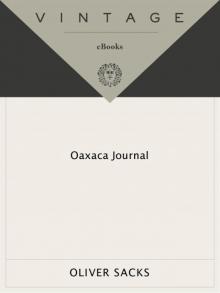 Oaxaca Journal
Oaxaca Journal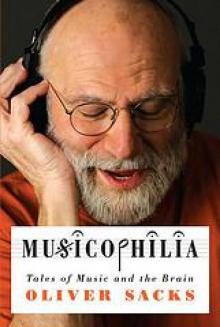 Musicophilia
Musicophilia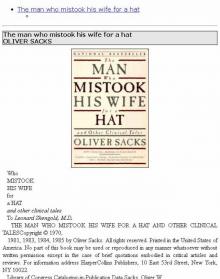 The man who mistook his wife for a hat
The man who mistook his wife for a hat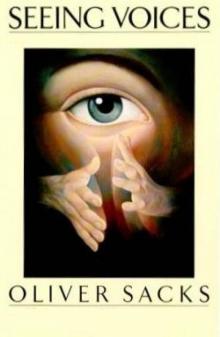 1989 - Seeing Voices
1989 - Seeing Voices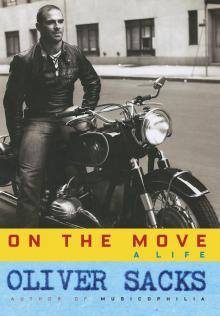 On the Move: A Life
On the Move: A Life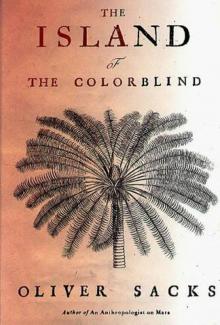 1996 - The Island of the Colorblind
1996 - The Island of the Colorblind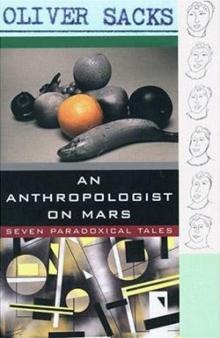 An Anthropologist on Mars: Seven Paradoxical Tales
An Anthropologist on Mars: Seven Paradoxical Tales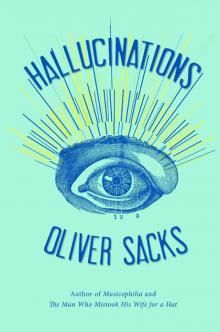 Hallucinations
Hallucinations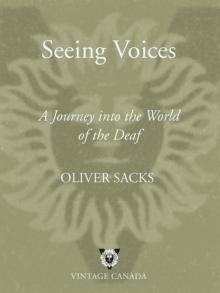 Seeing Voices
Seeing Voices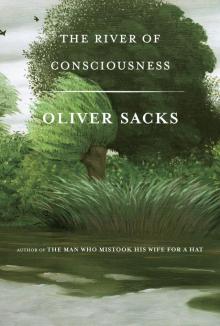 The River of Consciousness
The River of Consciousness Vintage Sacks
Vintage Sacks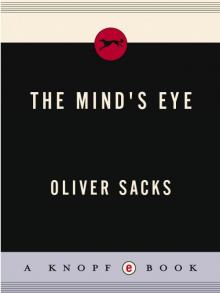 The Mind's Eye
The Mind's Eye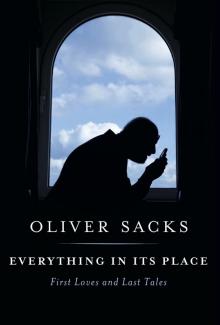 Everything in Its Place
Everything in Its Place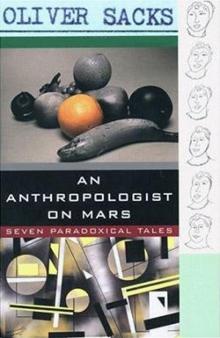 An Anthropologist on Mars (1995)
An Anthropologist on Mars (1995) Uncle Tungsten: Memories of a Chemical Boyhood (2001)
Uncle Tungsten: Memories of a Chemical Boyhood (2001)